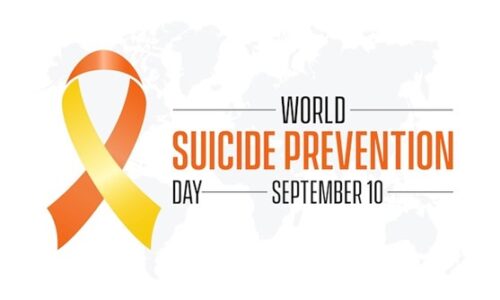Learning workplace CALM suicide awareness training in ACT, will help organisations too improve their employee health and wellbeing. Let’s have a look at first, Suicide Rates in ACT (Australian Capital Territory)
In ACT last year, 65 people died from intentional self-harm (49 male, 16 female), according to the Australian Bureau of Statistics. This is an increase from 2020 (57 people). Compared to women, male suicides were three times higher.
With 13.8 suicides per 100,000 people, Australian Capital Territory is the fourth highest age-standardised suicide rate in the nation. This is an increase from 12.4 per 100000. Compared to other ages, suicide among those between 15 and 24 is the highest.
The Australian Capital Territory places a high priority on suicide prevention. In partnership with Black Dog Institute (BDI), ACT is implementing the LifeSpan Integrated Suicide Prevention Framework. Providing interventions and programs related to suicide prevention, they strengthen the capacity of the community to provide better support to individuals and families.
An estimated one-third of Aboriginal and Torres Strait Islander adults over the age of 18 reported experiencing high to very high levels of psychological distress. Indigenous people in the ACT experience a 3.4 times greater rate of unemployment than non-Indigenous people.
Aboriginal and Torres Strait Islander people are hospitalised for mental illness at a rate of 23 per 1000 population in the Australian Capital Territory. In comparison to non-Indigenous populations, this is 2.3 times higher.
There is a strong commitment to mental health and wellbeing among the ACT Government and its agencies. Providing wrap-around support for individuals is achieved through partnerships with the community sector.
Strategies for supporting employees when a co-worker has died by or attempted suicide.
A suicide prevention strategy should take account of the factors in the workplace that increase the risk of suicide. There are a number of factors that can contribute to employee dissatisfaction, including bullying and harassment, monotonous tasks, psychological work pressures that create stress, a lack of control over work, heavy workloads, and inadequate rewards.
The following policies should be in place in a workplace:
- Mental health and suicide prevention information sessions should be provided to your employees. Make sure all employees are aware of support resources available in the organisation and in the community.
- In order to achieve these goals, we must foster a work environment where colleagues feel free to discuss the issues that are impacting their ability to do their job well, as well as a culture of support when it comes to difficult tasks.
- Learn about the relevant ACT/regulations
- Stressors related to work that may negatively affect the mental health of employees should be identified and reduced.
- Plan and implement a strategy for sensitively dealing with and communicating an employee’s suicide or attempt at suicide in a manner that minimises further distress. Among the measures that should be taken are the availability of mental health professionals and the provision of support services to employees.
Taking action as an individual
There may be instances where a colleague displays suicidal signs, or discloses to you that they are considering suicide. Even though organisations and leaders play an important role in reducing suicide risk, this may not always be the case.
Regardless of whether you are close to your colleagues, you are still able to observe changes in their behaviour or be alert to events in their lives that could negatively impact them.
The following are general signs that you should be looking for in a colleague:
- Considering suicide or simply not wanting to be present
- When someone complains that they are a burden to others
- An attempt at suicide or a disclosure of an attempt at suicide
- Experiencing emotional pain or feeling trapped
- Anxiety, irritability, and/or agitation are typical symptoms of this condition
- Sleeping problems are a common occurrence
- A change in appearance and a general lack of grooming
- A decrease in performance or productivity at work or taking more time off
- An event that took place recently that was stressful
- Losing a loved one recently has been difficult
- Retrenchment from social activities
- Having a distracted or distant appearance
Don’t be afraid to speak with someone if you are concerned they might be suicidal at work. Let them know that you are concerned about them and that you want them to know that you care about them. Having problems with how to approach a conversation like this is a perfectly normal feeling, but you must keep in mind that no one truly knows what the right thing to say is in a situation like this. In the event that a colleague discloses that they have a mental health condition or are considering suicide, it can be helpful to remain calm and non-judgmental so as not to upset them.
Sharing suicidal thoughts takes courage as well as asking about suicide. In this regard, you should acknowledge your colleague’s honesty and thank him or her for being open with you.
Suicidal thoughts are a very common occurrence
Having suicidal thoughts is not necessarily an indication that a colleague is going to act on them.
As a duty of care, it is very important that if this situation arises, you let him or her know that you care about their wellbeing and that you will support them to access professional assistance.
You may ask the employee whether they wish you or someone else to contact the Employee Assistance Program on their behalf, or if they would prefer that you call on their behalf. It is up to you whether or not you feel comfortable doing this for them. In addition, the employee’s manager or human resources employee may handle this. As soon as possible, request a telephone consultation with the EAP in the course of the conversation.
Stay with the employee during the call and assist him or her in making the call to the EAP. Although you may be able to call on an employee’s behalf, it is essential to remember that they may still need assistance.
You may offer to arrange an urgent appointment with their GP if they do not wish to contact the EAP provider. Make sure they have an accompanying friend or family member.
In the event that the employee refuses to accept the above support, request their consent to contact the employee’s emergency contact and explain your concerns to them. However, it is still recommended to seek the employee’s consent in this case.
What is Mental Health First Aid, CALM Suicide Intervention Skills and CALM Suicide Awareness Training ACT?
This Mental Health First Aid, CALM Suicide Intervention Skills and CALM Suicide Awareness training programs are aimed at helping people become better at suicide prevention so they can support, respond to and refer people in suicidal crisis to ACT’s appropriate, professional support.
By supporting volunteers, family members, and advocates, these initiatives create a network of community members who are more willing, able, and prepared to offer assistance to someone who is facing suicidal thoughts.
How to access Mental Health First Aid, CALM Suicide Intervention Skills and CALM Suicide Awareness training in ACT?
If you live in the Australian Capital Territory you can access this training or other courses such as elearning. Our priority to assist you to train your staff and help your community to reduce the suicide rates in ACT.
Interested in receiving this training in ACT? Contact info@whsandtrainingcompliance.com.au for a quote.
As we all know, suicide is a tragic event that takes the lives of many people. Suicide can be prevented, and the more we are equipped to recognise and intervene in a safe manner in order to help someone who is at risk of suicide, the greater the chance of saving lives. We can reduce the Suicide Rates in ACT.
Whether it is saving a loved one from suicide or intervening in order to keep them as safe as possible until it is possible to reach specialist help or emergency services, attending a Suicide Intervention training programs gives people the skills and confidence to intervene and reassure someone at risk of suicide.
Organisations with staff who work in a suicide-risk location can benefit from CALM Suicide Intervention Skills and CALM Suicide Awareness training in ACT. Developing suicide prevention strategies within a company can also be highly beneficial.












